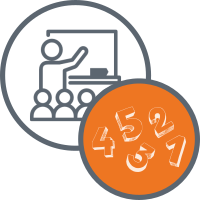Most CDE offices will be closed for the holidays beginning Dec. 23. All offices will reopen on Jan. 2, 2025.
You are here
Equity-Based Mathematics Teaching Practice 3: Affirming Mathematics Learners' Identities
Instructional Support Menu
Affirming Mathematics Learners' Identities
Much of this equity-based practice relies on the relationships between teachers and students and the support and acceptance they show each other during instruction. These relationships and exchanges shape the collective understanding of what it means to do mathematics, and what it means to be good at mathematics.
The Practice in Action
Aguirre, Mayfield-Ingram, and Martin (2013, pp. 43-48) summarize the practice of affirming mathematics learners' identities by describing what it does and doesn't look like in a lesson, considerations for assessment, and questions for teacher reflection.
Caution! Don't over-estimate your own understanding based on these brief descriptions of teaching practice. Professional educators should dig more deeply into related resources, join study groups and professional networks, and seek out professional development and coaching to ensure high-quality engagement in the practice.
A representative lesson
- Is structured to promote student persistence and reasoning during problem solving.
- Encourages students to see themselves as confident problem solvers who can make valuable mathematical contributions.
- Assumes that mistakes and incorrect answers are sources of learning.
- Explicitly validates students’ knowledge and experiences as math learners.
- Recognizes mathematical identities as multifaceted, with contributions of various kinds illustrating competence.
A non-representative lesson
- Is structured to emphasize speed and competition.
- Connects mathematical identity solely with correct answers and quickness.
- Explicitly discourages mistakes and immediately corrects them, often without constructive feedback.
- Gives ambivalent value to flexibility, reasoning, and persistence.
Assessment considerations
Communication:
- Focuses feedback on making sense of the mathematical idea rather than on the ratio of correct answers to the total possible.
- Focuses on strengths and improvements needed.
- Points out what is productive or problematic about a students’ chosen strategy.
Questions for reflection
- How do I structure my interactions with students to promote persistence with complex math problems?
- How do I discourage my students from linking speed with math “smartness”?
Resources
- The Impact of Identity in K-8 Mathematics: Rethinking Equity-Based Practices by Aguirre, Mayfield-Ingram, & Martin (2013)




Connect With Us





